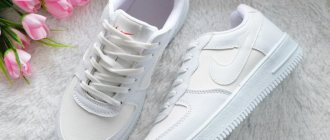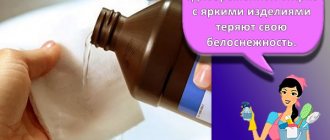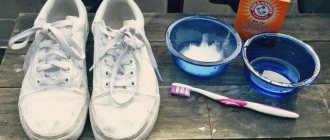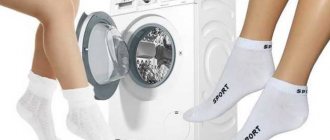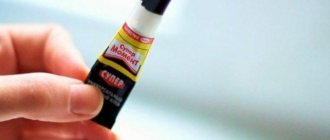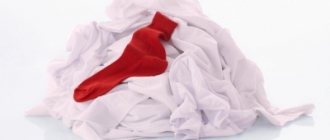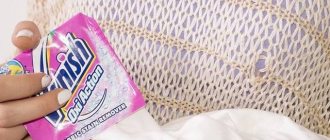White things look elegant even without additional accessories. To ensure that such clothes are always beautiful and clean, they need proper care.
It must necessarily include washing according to all the rules, removing stains, bleaching and proper drying.
We’ll tell you in this article how to wash white clothes in an automatic washing machine and by hand, what you can and can’t do, and how to bleach them properly so that your laundry is snow-white.
Preparing for washing: what does the label tell you?
Washing items of any color, especially white, should begin with studying the label for the product.
The manufacturer indicates on it all the nuances of processing:
- possible type of washing;
- permission or prohibition to carry out dry cleaning;
- the possibility of ironing and in what mode, at what degrees to carry it out, as well as other useful information.
Some white items can be washed in hot water and bleached.
This group mainly includes clothes made of dense natural cotton. Without studying the useful information on the label, you cannot start washing - you can irrevocably damage the item. In addition to studying information from the manufacturer, before washing it is necessary to inspect the item for defects:
- torn stitching along the seam;
- poorly secured buttons;
- stains, etc.
They must be eliminated before the main wash, regardless of whether it is done by hand or in the washing machine. Next, items should be sorted by color and washing criteria.
It is advisable to wash white clothes separately not only from colored ones, but also from those that have even a slight, barely noticeable tint.
You can find out whether it is possible to wash white and colored clothes here. Is it possible to wash white and gray together? Read here.
How to wash in an automatic washing machine: at what temperature, in what mode?
Processing things in a washing machine is convenient, does not take much time, and does not require any effort.
But it is possible to put into the drum only those products that meet two basic requirements:
- The manufacturer allows you to wash them in this way.
- Preparation for washing has been completed, defects, if any, have been eliminated.
Generally accepted recommendations for washing white clothes are presented below:
| Product type | Fabric type | Washing temperature, ºС | Mode |
| Shirt, pants, skirt, dress, etc. | Silk | 30 | Silk, Delicate |
| Cotton | 40 | Cotton, Delicate | |
| Synthetics | Synthetics | ||
| Lingerie | Synthetic or cotton | Up to 40 | Delicate |
| Sweater, pullover, golf, etc. | Wool | 30 | Wool, Delicate |
| Underwear | Cotton | 60, if very dirty - 90 | Cotton |
| Bed sheets | |||
| Waffle towels | |||
| Kitchen towels | |||
| Terry towels | From 40 to 60 | ||
| Diapers | Up to 95 | Children's clothing, Boiling |
It is recommended to select a detergent marked “White” or “for white clothes”. Such preparations contain bleaching components that will not damage the fabric. These products are available in powder and gel form.
The liquid form dissolves better in water and penetrates well into the fibers of the material, providing high-quality washing. It is especially preferred for processing delicate materials.
Washing procedure:
- Load the products that have passed the preliminary inspection and sorting into the machine.
- Add detergent intended for washing white items to the special compartment.
- You can add fabric softener to a separate compartment (the exception is delicate laundry that can be washed without it).
- Set the mode on the machine. If necessary, adjust the temperature.
- Start the washing process.
If things are very dirty or worn out, they must be pre-soaked. This can be done in a basin, or by setting a separate mode (if there is one) on the washing machine.
Soaking time directly depends on the material and the product itself . A maximum of up to 4 hours is allowed for cotton towels and bed linen. For delicate fabrics – up to half an hour.
If white fabric has a yellowish tint due to wear, then when washing in a machine, you can add oxygen bleach to the powder container.
Temperature
White cotton items can be safely washed at high temperatures of 60-90 degrees without fear of damaging the product. But this applies to snow-white things. If the laundry is ivory or beige in color, then it is better to refrain from high-temperature conditions.
Synthetics should be washed at a maximum of 40 degrees, otherwise there is a high risk of damage to the fabric structure.
Wool and acrylic do not tolerate high temperatures.
Woolen items may shrink and shrink in size, making them unsuitable for further use.
Important! Despite generally accepted rules, manufacturers' recommendations must be followed. They are indicated on tags or factory labels.
White linen
How to properly wash by hand?
To wash by hand, you need to prepare a large basin and detergent.
Procedure:
- Fill a basin with water at a temperature suitable for washing.
Dilute the detergent.- If necessary, especially dirty areas can be soaped with laundry soap.
- Soak things. This will make it easier to remove dirt later. Soaking time can be from 15-30 minutes for delicate clothes and up to 4 hours when washing cotton bed linen and waffle towels.
- If after soaking the water becomes dirty, it must be replaced and the washing powder or gel dissolved in it again.
- Wash by hand. Stained areas will be easier to clean if you gently rub them with a brush.
- Rinse things by changing the water.
Soak
To remove dirt and enhance the washing effect, use a soak with bleaching agents before machine washing:
- two tablespoons of baking soda whitens natural fabric;
- two liters of water with five tablespoons of peroxide removes gray from synthetic fabric;
- two tablespoons of ammonia per liter of water bleaches silk;
- a tablespoon of dry mustard per liter of water gets rid of faded stains on silk and other delicate fabrics;
- a glass of vinegar solution (9%) per two liters of water whitens lace fabrics and tulle;
- salt and soda, mixed in equal proportions, bleach guipure and satin fabrics;
- rinsing under cold water and soaping with laundry soap helps remove traces of blood;
- 20 g of potassium permanganate per liter of water eliminates yellowness (things are soaked under cling film).
Heavily soiled fabrics should be soaked before washing.
Important! Soak laundry for no more than three hours. The more aggressive the product and the thinner the fabric, the shorter the soaking time should be.
Removing stains at home
Stains can completely ruin the effect of a white item. It is advisable to start removing them as early as possible so that the contaminants do not have time to be absorbed deeply into the fibers.
It is useful to know the origin of the stain in order to act as effectively as possible.
You can learn about ways to remove yellow stains of various origins from white things from this article.
Fat
You can try to remove a greasy stain in several ways . One of them is applying dishwashing detergent to the fabric. If you have white chalk on hand, you can crush it and sprinkle it on the greasy stain. The white powder will absorb fat particles.
Grass
Treating with alcohol will help remove traces of grass from the surface of the white material. If it is not available, you can use vodka.
Procedure:
- the stained area is soaked with an alcohol-containing liquid;
- leave the item for a quarter of an hour;
- rinse;
- washed.
To remove stains from white clothes, only alcohol and vodka are allowed, as other alcohol-containing drinks can stain the fabric.
Fruits
Berry and fruit stains are quite difficult to remove . If possible, the item should be washed immediately using washing powder. After treating the stain, soak the soiled clothing for half an hour and wash it as usual.
Blood and wine
Treatment with alcohol or hydrogen peroxide will help deal with wine or blood stains. After the active substance has taken effect, the product is rinsed and washed.
Do not use hot water, as this may cause permanent yellowish stains on the white background.
Read about how to remove red wine stains from white clothes here.
Sweat
There are several ways to remove sweat stains. You can do the following:
- Combine 1 tbsp in a bowl. soda and 1 tbsp. l. salt.
- Add 1 tsp. liquid soap.
- Stir.
- Apply to stains.
- Leave for half an hour.
- Wash.
In addition, sweat stains can be removed in ways that are not available for colored fabrics due to possible discoloration. Such agents include hydrogen peroxide.
The following recipe will help as a quick response method:
- pour peroxide directly from the bottle onto the stains;
- stand for a quarter of an hour;
- wash.
Effective ways of how and with what to remove yellow stains from sweat under the arms from white clothes are presented here.
Nail polish and paint
You can try to remove stubborn stains using suitable solvents. For varnish - nail polish remover, for paints - white spirit or another solvent.
If a large surface of a white item has been damaged by a persistent substance, it is unlikely that the item will be able to return to its original appearance.
Household chemicals
Washing powder and Persol
Persol bleach is used for washing cotton and linen fabrics.
Mix 2 tablespoons of product and 200 g of washing powder. Pour everything into the washing machine compartment and set the wash cycle at a water temperature of 95 degrees.
White
This bleach contains chlorine, so it must be used with extreme caution. At a high concentration of any chlorine-containing product, even the most durable fabrics can be damaged. Before using bleach, read the instructions for adding it to water, both when soaking and when boiling white laundry.
IMPORTANT! Frequent use of chlorine-containing products leads to the destruction of fabric fibers.
What to do if the item is painted?
If, along with white clothes, not only white, but also colored items get into the same load of the washing machine or into the basin, the products can be seriously damaged.
Even the combined treatment of white and light-colored clothes often leads to irreparable consequences. If a problem with coloring is identified, the situation must be corrected very quickly, before the stains become old .
A white item can become stained not only during the washing process, but even if it is not properly dried close to colored clothing. How to deal with the problem of accidentally staining a white item can be found here and here.
Rules of care
In order for white items to last a long time, you need to know the basic rules of care:
- wash and remove stains from white linen in a timely manner, send for storage only in clean form;
- Yellow stains often appear on folded items; it is better to store clothes on hangers;
- Washing for white laundry is not enough; to prevent the item from turning gray, it is periodically bleached;
- Before washing white in the machine, you should rinse it by running the “Rinse” mode;
- White items do not like long-term storage (they turn yellow for no reason), they need to be worn.
For washing, you should choose special detergents for white laundry.
White things make you look younger, refresh, and give a person chic and aristocracy. To do this, the clothes must be in perfectly clean condition. When buying white, you need to remember that you will have to wash things often, so you should stock up on detergents in advance and familiarize yourself with the care instructions.
Share link:
The best bleaching methods to keep your laundry snow-white
To restore the snow-whiteness of things, you can use several methods to solve the problem:
- use of folk recipes;
- use of household bleaching agents;
- boiling.
The bleaching of children's clothes deserves special mention. For these purposes, boiling with laundry soap can be used (if the product can be treated this way) or the use of special children's bleaches, for example.
Each bleaching method has limitations that must be taken into account so as not to spoil the product.
Boiling
Using boiling can not only whiten things, but also remove dirt and refresh fabric. It may be allowed to expose only products made of dense cotton or linen fabrics that do not have a complex cut, decoration or inserts from other materials.
For boiling you will need:
- large enameled container (about 10 liters in volume);
- detergent (laundry soap - 1-2 pieces);
- device for mixing things.
It is not advisable to use galvanized and aluminum pans for boiling, since as a result of the chemical reaction of the detergent with the metal, difficult-to-remove stains may appear on the fabric.
Also, when washing, you should not replace laundry soap with washing powder - during the boiling process, fumes harmful to humans will be released into the air. In addition, most washing powders are not designed for heating above +95ºС.
Procedure:
Grate laundry soap.- Pour water into a container.
- Place the container on the fire.
- Add grated soap.
- Stir until completely dissolved.
- Place the laundry in the water.
- Stirring occasionally, bring the cleaning solution to a boil.
- Reduce heat.
- Continuing to stir things, boil them for 1-1.5 hours.
- Leave things to cool.
- After washing, rinse and dry.
To enhance the effectiveness of boiling, you can add 2 tbsp to the soap solution. l. hydrogen peroxide. An alternative option is to add 10 tbsp. l. soda
It is advisable to use the container used for boiling things only for household purposes, and not for food.
Use of household chemicals
In addition to chlorine-containing bleaches, modern housewives have products in their arsenal that act gently without damaging the fabric. They can be used for washing, and can also be added to washing powder as an addition to increase washing efficiency.
These bleaches include:
- "Vanish";
- "BOS plus" and others.
Regular use of bleach will keep things white.
Folk recipes
A simple way to make bed linen and T-shirts white is to add 1 tbsp. l. soda into the washing powder compartment of the machine. You can also add soda to the powder during manual processing.
Soaking in a solution with ammonia will also help to whiten things:
Combine 2 tbsp in a bowl. l. ammonia and the same amount of soda.- Mix.
- Pour into a basin.
- Fill with water (5 l.).
- Mix.
- Place the laundry in the basin.
- Leave for a couple of hours.
- Rinse.
- Wash as usual.
Drying: where and how?
It is necessary to dry white items immediately after washing, without leaving them in the machine drum or basin for a long time, as the items may acquire an unpleasant odor and develop stains and smudges. The clothes are wrung out of excess water and dried flat.
A short-term exposure of white clothes to the sun will not harm them, but long-term exposure should be avoided.
How exactly to dry a thing depends on its type and material:
- woolen sweaters - in a horizontal position on a terry towel;
- linen and bedding - thrown over a clothesline;
- blouses and shirts - on trempel;
- T-shirts - on a rope using clothespins.
To speed up the drying process, white clothes should not be placed on heating devices or near an open flame. Things dry best outdoors and in dry rooms.
It is necessary to provide them with the opportunity to dry in a straightened form, without touching the walls or other clothes. Before you hang your white clothes on the drying line outside, you should make sure it is clean.
Ironing
Iron natural fabrics after washing, especially children's and bed linen.
Ironing clothes
To make ironing easier or to get rid of this procedure altogether, place a few ice cubes in the drum along with the washed laundry. Turn on the dryer. The melted ice will act as a steamer.
Recommendations
you wash white clothes without unpleasant consequences :
It is advisable to wash white items separately from items of other shades.- It is necessary to deal with stains on clothes before the main wash.
- Worn, light-colored clothes are more difficult to wash than those that have been worn 1-2 times.
- When boiling laundry, you must turn on the hood or open a window.
- It is recommended to wash items as they become dirty, without accumulating them for a long time.
- White items should not be stored in direct sunlight.
- Removing stains from items and hand washing should be done using rubber gloves.
- Spinning at high speeds leads to rapid wear of things.
For expensive exclusive items, dry cleaning can be used.
You will find maximum useful information about washing clothes and various fabric products here.
